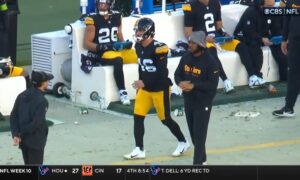You know that when it comes to football, there are all kinds of statistics floating around, metrics designed to try to predict success. Some are far less successful than others at making those predictions accurately. One of the statistics that we here are a fan of is what is called the Toxic Differential, which adds up the number of explosive plays for and against, as well as the takeaways and giveaways, and spits out a number that is positive or negative.
The Toxic Differential has been a pretty good indicator of success over the years, although it has not been foolproof by any means. I believe the Pittsburgh Steelers have lost three games in which they have won the Toxic Differential, or won when they lost it.
But the Steelers are having a bit of an outlier season, so that might be understandable. In fact, they have done very well in the Toxic Differential this year, which is not reflected in their 6-5 record. Their +10 number ranks tied for the sixth-best mark in the league.
On the flip side, the New York Giants’ Toxic Differential is among the worst in the league, with their -13 figure ranking them tied for the 28th-worst mark in the NFL. The combined 23-point differential between the two teams is striking, considering who has the better record.
This is why—or at least one of the many reasons why—many of the experts are putting their money on the 6-5 Steelers to beat the 8-3 Giants on Sunday. They feel that the Steelers are the better overall team in key areas, and that the discrepancies in schedules, health, and minor quirks will balance out to the outcome that the Toxic Differential would predict.
On the season, both the Steelers and Giants have recorded a total of 14 takeaways on the season. But the Steelers offense has given up the ball only 10 times this year—the seventh-lowest mark in the league—while the Giants have turned it over 19 times—only five teams have done so more.
That gives Pittsburgh a +4 in the turnover column and the Giants a -5, but the Steelers also have the advantage in the explosive plays given up and recorded as well.
On the year, the Steelers have so far recorded 44 explosive plays on offense, which is in the grey area between the bottom of the top third of the league and the top of the middle third. But defensively, they have only given up 38 explosive plays, which is actually toward the bottom third of the league.
Conversely, the Giants have recorded just 37 explosive plays on offense while giving up 45 of them on defense—partly because they are targeted on deep passes as frequently as anybody.
Those numbers grant Pittsburgh a +6 differential in the explosive plays category, while the Giants earn a -7. With the more explosive and less turnover-prone offense, and a defense less inclined to giving up big plays, the Steelers should be well positioned to earn their third victory in a row.








